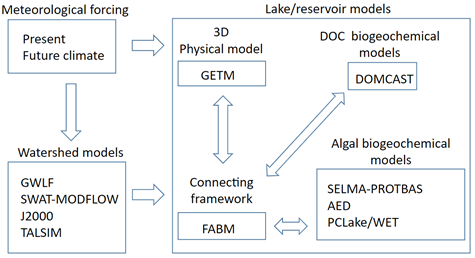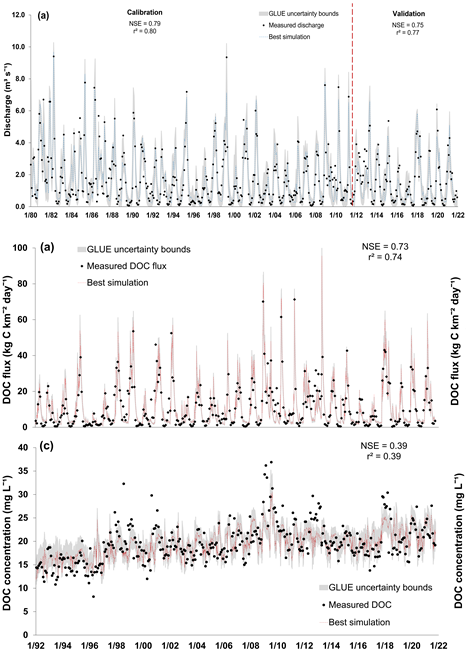Work Package 1 – GETM and FABM model development and implementation
- Implement three fully functional 3D lake/reservoir hydrodynamic model setups using the GETM model at each demonstration site.
- Work with stakeholders to make the system available and useable to them.
- Based on the above experience develop best practices that will simplify future implementations of the 3D modelling system.
- Evaluate the trade-offs between lake size grid scale computational time, and scenario design

Work Package 2 – Biogeochemical model development and implementation
- This work package aims to set up two biogeochemical models, previously developed to operate with FABM, at the three study sites. These will coupled to the 3D physical models developed in WP 1 , and also tested in a 1D frame work using the GOTM hydrodynamic model.
- SELMA – PROTBAS – simulates nutrient biogeochemistry and the growth of phytoplankton. PROTBAS can simulate multiple functional groups of phytoplankton with the potential to more accurately simulate blooms that affect drinking water and recreation. The model also calculated internal production of carbon that affects dissolved organic carbon (DOC).
- DOMCAST. This is an advanced biogeochemical models that simulates the processing of DOC in the lake water column and sediment via three main processes: flocculation, microbial oxidation and photodegradation. By cooperating with other projects we hope to further test and improve this model during the project.


Work Package 3 – Watershed – Lake/reservoir coupling
We plan to make use of existing watershed models to provide the inputs to the lake/reservoir systems during extreme events. This work package will:
- Review the watershed models available at each site.
- Determine the best gridded meteorological inputs for the watershed models in regards to both watershed size and lake model grid size. Verify results using these inputs to simulate historical stream flow.
- Test coupling watershed inputs to lake/reservoir models. Evaluate historical lake/reservoir simulations using simulated watershed inputs.
- Use these models to produce simulations of historical and future climate watershed inputs to the lake/reservoir models developed in work packages 1 and 2


Work Package 4 – Case Study Scenario Development and testing
With stakeholders, co-develop scenarios that will be used for modelling system development and testing, and be applicable to the water quality issues relevant to each site. Provide advice and model solutions tailored to specific stakeholder needs.
We may need water system operations
- Short-term forecasts based on historical events
- Long-term simulations of climate change effects on drinking water quality.
- Long term historical simulations to evaluate ongoing change
- Future climate simulations to evaluate the effects of increasing hydroclimatic extreme events.
Work Package 5 – Knowledge transfer
For this project to succeed it will be essential to ensure that knowledge be effectively transferred between project partners and also between the partners and the stakeholders associated with each demonstration site.
- Effectively transfer the models developed by MEWS to the project partners associated with each demonstration site.
- Transfer information to the stakeholders on model development and provide training in model use to the stakeholders. (Let us know how best to interact!)
- Make all model software well documented, open source and freely available at the end of the project.
- Develop example workflows based on WP4 case studies. These will be deposited in public depositories, and can be modified for new purposes at each demonstration site.
- Develop model training information that can be help others make use of the modelling system.
